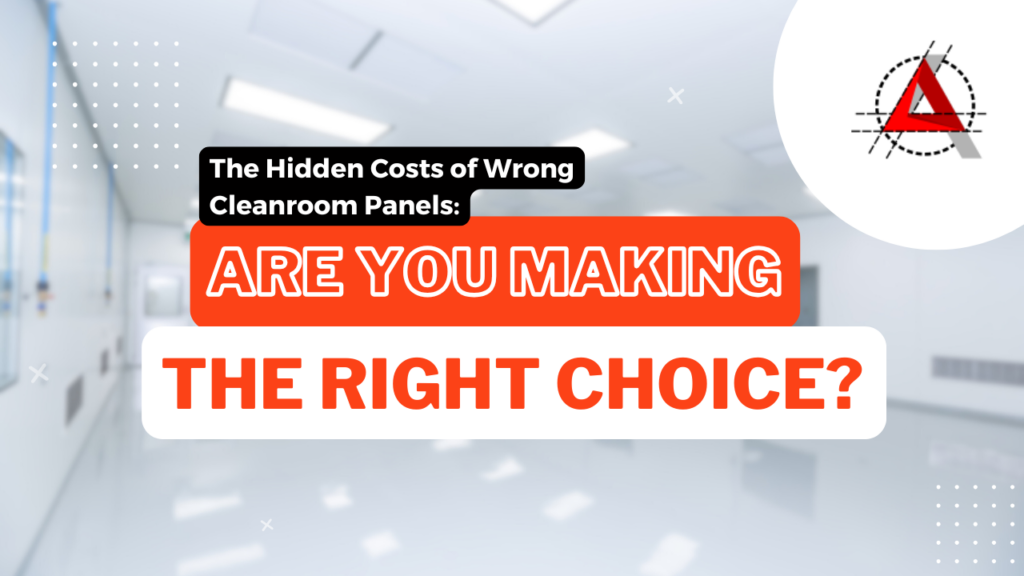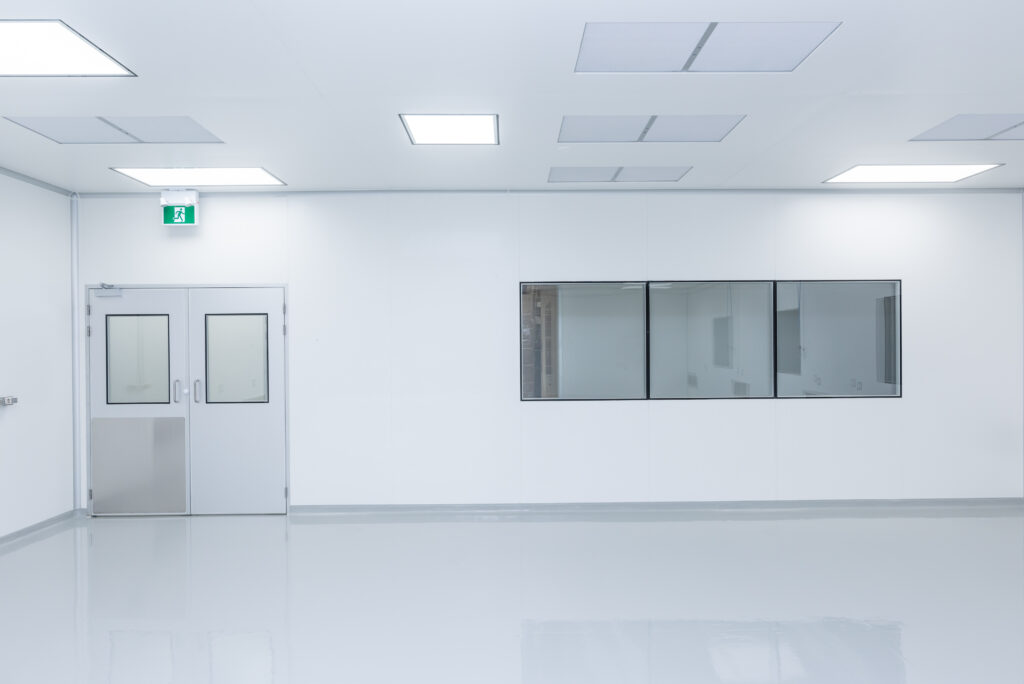The Hidden Costs of Wrong Cleanroom Panels: Are You Making the Right Choice?

Selecting the proper cleanroom panels for a cleanroom design involves more considerations than just price or appearance. It all comes down to making sure your cleanroom satisfies stringent industry standards, runs smoothly, and delivers on its commitments over time. Unfortunately, choosing the incorrect cleanroom panels can result in substantial unanticipated expenses that have an impact on your overall productivity, compliance, and budget.
In this blog, we’ll reveal the hidden expenses that frequently result from selecting the incorrect cleanroom panels and how doing so can help you avoid future headaches, wasted time, and money.
1. Increased Maintenance and Repair Costs
The increase in maintenance is one of the largest hidden costs linked to poor panel selections. The materials chosen for the panels have a direct impact on the sterility of the environment, which is supported by regular cleaning and maintenance in cleanrooms. More frequent cleaning and repairs will be necessary for panels that are prone to scratches, dents, or the accumulation of impurities. This may result in:
- More cleaning cycles: Panels that collect particles, bacteria, or dirt will require more frequent and thorough cleaning, which will raise labor expenses.
- Higher repair or replacement costs: Poorly chosen panels may deteriorate more quickly, causing more frequent fixes or perhaps total replacement.
- Increased downtime: Regular replacements or repairs can cause disruptions to cleanroom operations, resulting in expensive downtime and lost output.
Solution: Select high-quality, smooth, and long-lasting panels that are less likely to break or require maintenance, including stainless steel or modular systems.

2. Reduced Energy Efficiency
An essential component of cleanroom operations is energy efficiency. Selecting the incorrect cleanroom panels can have a direct effect on your space’s insulation, increasing energy usage. Poor insulation can result in temperature and humidity variations that waste energy and raise expenses in cleanrooms, which frequently need exact control.
Panels with poor sealing or insufficient heat resistance may cause:
- Increased heating and cooling costs: Your HVAC system must work harder to keep temperature and humidity levels due to energy loss caused by poor insulation.
- Inconsistent room conditions: Changes in humidity or temperature might cause contamination problems that need expensive remedial actions.
Solution: To lessen dependency on HVAC systems and assist maintain stable conditions, select panels with excellent insulation ratings. For this, sandwich panels with insulating cores made of polyurethane, polystyrene or aluminum honeycomb work best.
3. Non-Compliance with Industry Standards
In cleanroom settings, regulatory compliance cannot be compromised. Strict guidelines, such ISO 14644 for cleanrooms and GMP for pharmaceuticals, are required by several businesses to maintain hygienic practices and quality control. Selecting panels that don’t adhere to these guidelines may cause:
- Penalties and fines: Violations of industry rules may lead to considerable fines or closures.
- Rework or redesign: If your cleanroom doesn’t adhere to regulations, you might have to rebuild the layout, which would cost more money in time, materials, and labor.
Solution: Collaborate with suppliers of cleanroom panels that can offer certification and paperwork to guarantee that the materials you select satisfy all applicable regulations.
4. Reduced Cleanroom Performance
Your cleanroom’s overall performance may be hampered by the incorrect panels. This involves problems with structural integrity, contaminant control, and inadequate airflow. These problems may affect:
- Contamination control: The environment’s cleanliness may be jeopardized if the panels are not adequately sealed, allowing airborne particles to penetrate.
- Airflow issues: Inadequately built panels may alter your cleanroom’s airflow patterns, making it more difficult to keep it as clean as you want.
- Structural issues: Poor-quality panels might not be strong enough to sustain the cleanroom’s structural requirements, raising safety concerns.
Solution: Select panels that have airtight seals and are engineered for maximum ventilation. Because they are designed for improved air control and pollution avoidance performance together with ease of installation, maintenance, and scalability, modular panels are frequently a viable option.

5. Long-Term Operational Costs
The charges of choosing the wrong panel can mount up over time, especially when long-term operating costs are considered. These could consist of:
- Frequent upgrades: If you select inferior panels, you might have to replace them sooner than anticipated, which would require more capital expenditures.
- Operational inefficiencies: You may need to adjust or compensate by putting in place extra systems or procedures if your cleanroom doesn’t function up to par, which would raise operating expenses.
- Reduced lifespan: Your cleanroom’s lifespan will be shortened by panels that are not sturdy, which means you’ll have to pay more to maintain, repair, or replace them sooner than you had planned.
Solution: Invest on long-lasting, high-quality panels that will continue to perform over time. Selecting the right panels up front might help you avoid future expensive changes and frequent replacements.
6. Impact on Cleanroom Design Flexibility
Selecting the incorrect cleanroom panels could limit the design options for your facility. Modular panel systems allow for flexibility in adapting to changing production needs, which frequently cause cleanrooms to vary over time. Your ability to expand or make changes will be constrained if you choose inflexible, non-modular panels.
This can lead to:
- Expensive redesigns: If the cleanroom needs to be rearranged, non-modular panel systems can need total overhauls or pricey modifications.
- Reduced scalability: Inflexible panel systems might hinder expansion and incur needless expenses when your cleanroom expands or needs modifications.
Solution: Systems with modular cleanroom panels are perfect for scalable settings since they can be easily expanded and reconfigured as needed without requiring expensive rework.
Making the Right Choice
Choosing the right cleanroom panel system is about more than just meeting basic cleanliness standards. It’s about ensuring long-term efficiency, cost-effectiveness, and regulatory compliance while minimizing hidden costs that can affect your bottom line. From increased energy bills and maintenance costs to compliance risks and reduced operational efficiency, the wrong panels can cost your business more than you realize.
Act Today: Don’t Let Hidden Costs Catch You Off Guard
Are you ready to choose the right cleanroom panels for your facility? Let’s ensure your cleanroom performs at its best while saving you money in the long run. Contact us today to discuss your cleanroom needs and get expert guidance on selecting the best panel system for your business.
GET IN TOUCH
Complete the form below to get in touch with our team.
